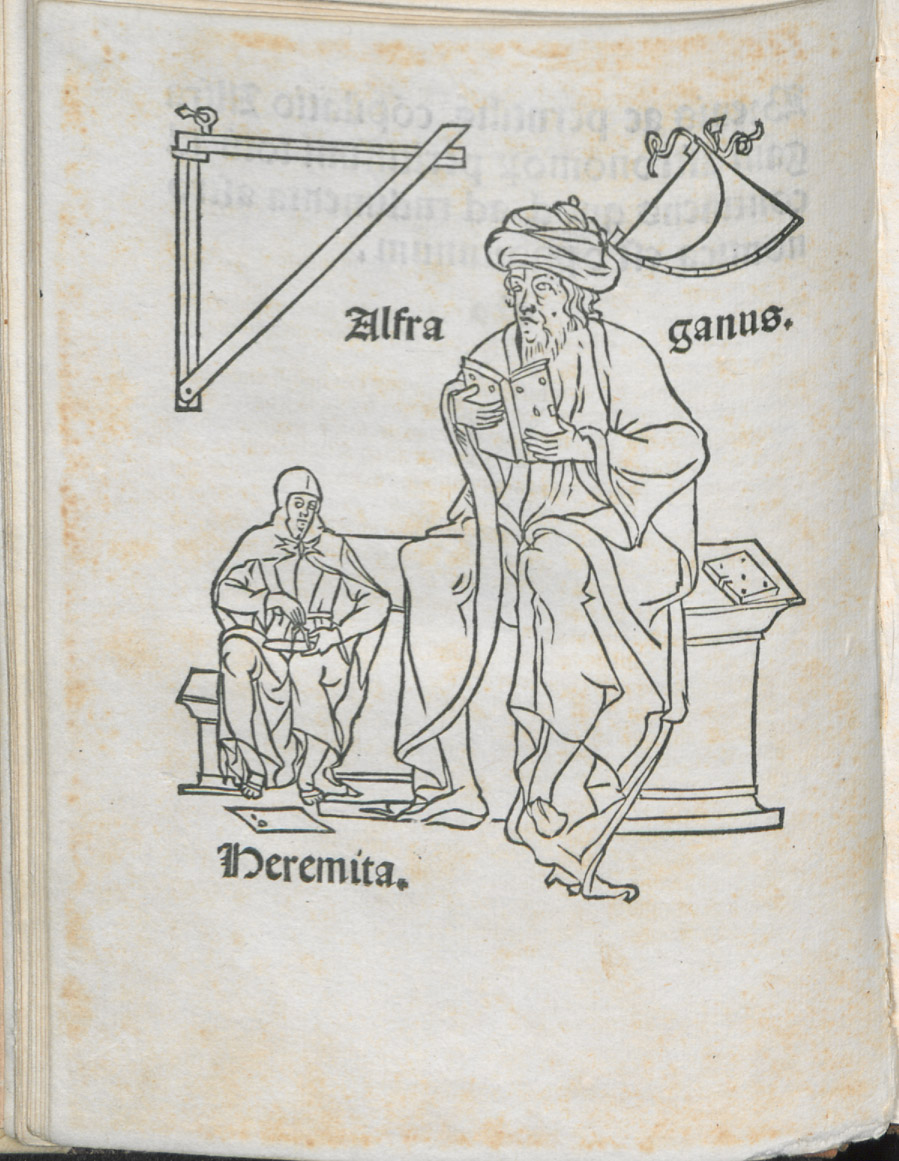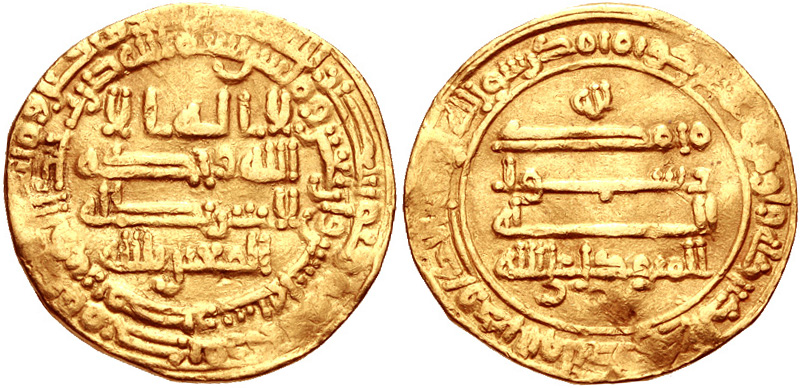|
Sanad Ibn Ali
Abu al-Tayyib Sanad ibn Ali al-Yahudi (died c. 864 C.E.), was a ninth-century Iraqi Jewish astronomer, translator, mathematician and engineer employed at the court of the Abbasid caliph Al-Ma'mun. A later convert to Islam, Sanad's father was a learned Jewish astronomer who lived and worked in Baghdad. Biography He is known to have translated and modified the Zij al-Sindhind. The Zij al-Sindhind was the first astronomical table ever introduced in the Muslim World. As a mathematician Sanad ibn ʿAlī was a colleague of al-Khwarizmi and worked closely with Yaqūb ibn Tāriq together they calculated the diameter of the Earth and other astronomical bodies. He also wrote a commentary on '' Kitāb al-ğabr wa-l-muqābala'' and helped prove the works of al-Khwarizmi. The decimal point notation to the Arabic numerals was introduced by Sanad ibn Ali. According to Ibn Abi Usaibia: the Banū Mūsā brothers out of sheer professional jealousy kept him away from Abbasid Caliph ... [...More Info...] [...Related Items...] OR: [Wikipedia] [Google] [Baidu] |
Astronomer
An astronomer is a scientist in the field of astronomy who focuses their studies on a specific question or field outside the scope of Earth. They observe astronomical objects such as stars, planets, natural satellite, moons, comets and galaxy, galaxies – in either observational astronomy, observational (by analyzing the data) or theoretical astronomy. Examples of topics or fields astronomers study include planetary science, Sun, solar astronomy, the Star formation, origin or stellar evolution, evolution of stars, or the galaxy formation and evolution, formation of galaxies. A related but distinct subject is physical cosmology, which studies the Universe as a whole. Types Astronomers usually fall under either of two main types: observational astronomy, observational and theoretical astronomy, theoretical. Observational astronomers make direct observations of Astronomical object, celestial objects and analyze the data. In contrast, theoretical astronomers create and investigate C ... [...More Info...] [...Related Items...] OR: [Wikipedia] [Google] [Baidu] |
Earth
Earth is the third planet from the Sun and the only astronomical object known to harbor life. While large volumes of water can be found throughout the Solar System, only Earth sustains liquid surface water. About 71% of Earth's surface is made up of the ocean, dwarfing Earth's polar ice, lakes, and rivers. The remaining 29% of Earth's surface is land, consisting of continents and islands. Earth's surface layer is formed of several slowly moving tectonic plates, which interact to produce mountain ranges, volcanoes, and earthquakes. Earth's liquid outer core generates the magnetic field that shapes the magnetosphere of the Earth, deflecting destructive solar winds. The atmosphere of the Earth consists mostly of nitrogen and oxygen. Greenhouse gases in the atmosphere like carbon dioxide (CO2) trap a part of the energy from the Sun close to the surface. Water vapor is widely present in the atmosphere and forms clouds that cover most of the planet. More solar e ... [...More Info...] [...Related Items...] OR: [Wikipedia] [Google] [Baidu] |
Astronomers From The Abbasid Caliphate
An astronomer is a scientist in the field of astronomy who focuses their studies on a specific question or field outside the scope of Earth. They observe astronomical objects such as stars, planets, moons, comets and galaxies – in either observational (by analyzing the data) or theoretical astronomy. Examples of topics or fields astronomers study include planetary science, solar astronomy, the origin or evolution of stars, or the formation of galaxies. A related but distinct subject is physical cosmology, which studies the Universe as a whole. Types Astronomers usually fall under either of two main types: observational and theoretical. Observational astronomers make direct observations of celestial objects and analyze the data. In contrast, theoretical astronomers create and investigate models of things that cannot be observed. Because it takes millions to billions of years for a system of stars or a galaxy to complete a life cycle, astronomers must observe snapshots of differe ... [...More Info...] [...Related Items...] OR: [Wikipedia] [Google] [Baidu] |
Al-Farghani
Abū al-ʿAbbās Aḥmad ibn Muḥammad ibn Kathīr al-Farghānī ( ar, أبو العبّاس أحمد بن محمد بن كثير الفرغاني 798/800/805–870), also known as Alfraganus in the West, was an astronomer in the Abbasid court in Baghdad, and one of the most famous astronomers in the 9th century. Al-Farghani composed several works on astronomy and astronomical equipment that were widely distributed in Arabic and Latin and were influential to many scientists. His best known work, ''Kitāb fī Jawāmiʿ ʿIlm al-Nujūmi'' (whose name translates to ''Elements of astronomy on the celestial motions''), was an extensive summary of Ptolemy's Almagest containing revised experimental data. Christopher Columbus, used Al Farghani’s calculations for his voyages to America. In addition to making substantial contributions to astronomy, al-Farghani also worked as an engineer, supervising construction projects on rivers in Cairo, Egypt. The lunar crater ''Alfraganus'' is name ... [...More Info...] [...Related Items...] OR: [Wikipedia] [Google] [Baidu] |
Canal
Canals or artificial waterways are waterways or engineered channels built for drainage management (e.g. flood control and irrigation) or for conveyancing water transport vehicles (e.g. water taxi). They carry free, calm surface flow under atmospheric pressure, and can be thought of as artificial rivers. In most cases, a canal has a series of dams and locks that create reservoirs of low speed current flow. These reservoirs are referred to as ''slack water levels'', often just called ''levels''. A canal can be called a ''navigation canal'' when it parallels a natural river and shares part of the latter's discharges and drainage basin, and leverages its resources by building dams and locks to increase and lengthen its stretches of slack water levels while staying in its valley. A canal can cut across a drainage divide atop a ridge, generally requiring an external water source above the highest elevation. The best-known example of such a canal is the Panama Canal. Many ... [...More Info...] [...Related Items...] OR: [Wikipedia] [Google] [Baidu] |
Ahmad Ibn Mūsā Ibn Shākir
Ahmad ( ar, أحمد, ʾAḥmad) is an Arabic male given name common in most parts of the Muslim world. Other spellings of the name include Ahmed and Ahmet. Etymology The word derives from the root (ḥ-m-d), from the Arabic (), from the verb (''ḥameda'', "to thank or to praise"), non-past participle (). Lexicology As an Arabic name, it has its origins in a Quranic prophecy attributed to Jesus in the Quran which most Islamic scholars concede is about Muhammad. It also shares the same roots as Mahmud, Muhammad and Hamed. In its transliteration, the name has one of the highest number of spelling variations in the world. Though Islamic scholars attribute the name Ahmed to Muhammed, the verse itself is about a Messenger named Ahmed, whilst Muhammed was a Messenger-Prophet. Some Islamic traditions view the name Ahmad as another given name of Muhammad at birth by his mother, considered by Muslims to be the more esoteric name of Muhammad and central to understanding his nat ... [...More Info...] [...Related Items...] OR: [Wikipedia] [Google] [Baidu] |
Samarra
Samarra ( ar, سَامَرَّاء, ') is a city in Iraq. It stands on the east bank of the Tigris in the Saladin Governorate, north of Baghdad. The city of Samarra was founded by Abbasid Caliph Al-Mutasim for his Turkish professional army of around 3,000 soldiers which grew to tens of thousands later. In 2003 the city had an estimated population of 348,700. During the Iraqi Civil War, Samarra was in the "Sunni Triangle" of resistance. In medieval times, Samarra was the capital of the Abbasid Caliphate and is the only remaining Islamic capital that retains its original plan, architecture and artistic relics. In 2007, UNESCO named Samarra one of its World Heritage Sites. History Prehistoric Samarra The remains of prehistoric Samarra were first excavated between 1911 and 1914 by the German archaeologist Ernst Herzfeld. Samarra became the type site for the Samarra culture. Since 1946, the notebooks, letters, unpublished excavation reports and photographs have been in th ... [...More Info...] [...Related Items...] OR: [Wikipedia] [Google] [Baidu] |
Al-Mutawakkil
Abū al-Faḍl Jaʿfar ibn Muḥammad al-Muʿtaṣim bi-ʾllāh ( ar, جعفر بن محمد المعتصم بالله; March 822 – 11 December 861), better known by his regnal name Al-Mutawakkil ʿalā Allāh (, "He who relies on God") was the tenth Abbasid caliph. He succeeded his brother, al-Wathiq, and is known for expanding the empire to its maximum extent. He was deeply religious, and is remembered for discarding the Muʿtazila, ending the Mihna (a period of persecution of Islamic scholars), and releasing Ahmad ibn Hanbal. He is also known for his tough rule, especially with respect to non-Muslim subjects. He was assassinated on 11 December 861 by the Turkic guard with the support of his son, al-Muntasir, marking the beginning of the period of civil strife known as the "Anarchy at Samarra". Early life Al-Mutawakkil was born on February/March 822 to the Abbasid prince Abu Ishaq Muhammad (the future al-Mu'tasim) and a slave concubine from Khwarazm called Shuja. His ... [...More Info...] [...Related Items...] OR: [Wikipedia] [Google] [Baidu] |
Abbasid Caliph
The Abbasid caliphs were the holders of the Islamic title of caliph who were members of the Abbasid dynasty, a branch of the Quraysh tribe descended from the uncle of the Islamic prophet Muhammad, Al-Abbas ibn Abd al-Muttalib. The family came to power in the Abbasid Revolution in 748–750, supplanting the Umayyad Caliphate. They were the rulers of the Abbasid Caliphate, as well as the generally recognized ecumenical heads of Islam, until the 10th century, when the Shi'a Fatimid Caliphate (established in 909) and the Caliphate of Córdoba (established in 929) challenged their primacy. The political decline of the Abbasids had begun earlier, during the Anarchy at Samarra (861–870), which accelerated the fragmentation of the Muslim world into autonomous dynasties. The caliphs lost their temporal power in 936–946, first to a series of military strongmen, and then to the Shi'a Buyid Emirs that seized control of Baghdad; the Buyids were in turn replaced by the Sunni Seljuk Turks i ... [...More Info...] [...Related Items...] OR: [Wikipedia] [Google] [Baidu] |
Banū Mūsā
The Banū Mūsā brothers ("Sons of Moses"), namely Abū Jaʿfar, Muḥammad ibn Mūsā ibn Shākir (before 803 – February 873); Abū al‐Qāsim, Aḥmad ibn Mūsā ibn Shākir (d. 9th century); and Al-Ḥasan ibn Mūsā ibn Shākir (d. 9th century), were three ninth-century Persian people, Persian scholars who lived and worked in Baghdad. They are known for their ''Book of Ingenious Devices'' on automaton, automata (automatic machines) and mechanical devices. Another important work of theirs is the ''Book on the Measurement of Plane and Spherical Figures'', a foundational work on geometry that was frequently quoted by both Islamic and European mathematicians. The Banu Musa worked in astronomical observatories established in Baghdad by the Abbasid Caliph al-Ma'mun as well as did research in the House of Wisdom. They also participated in a 9th-century expedition to make geodesic measurements to determine the length of a degree. They are credited with inventing the first music s ... [...More Info...] [...Related Items...] OR: [Wikipedia] [Google] [Baidu] |
Ibn Abi Usaibia
Ibn Abī Uṣaybiʿa Muʾaffaq al-Dīn Abū al-ʿAbbās Aḥmad Ibn Al-Qāsim Ibn Khalīfa al-Khazrajī ( ar, ابن أبي أصيبعة; 1203–1270), commonly referred to as Ibn Abi Usaibia (also ''Usaibi'ah, Usaybea, Usaibi`a, Usaybiʿah'', etc.), was an Arab physician from Syria in the 13th century CE. He compiled a biographical encyclopedia of notable physicians, from the Greeks, Romans and Indians up to the year 650AH/1252AD in the Islamic era. Biography Ibn Abi Usaibia was born at Damascus, a member of the Banu Khazraj tribe. The son of a physician, he studied medicine at Damascus and Cairo. In 1236, he was appointed physician to a new hospital in Cairo, but the following year he took up an offer by ruler of Damascus, of a post in Salkhad, near Damascus, where he lived until his death. His only surviving work is ''Lives of the Physicians''. In that work, he mentions another of his works, but it has not survived. ''Lives of the Physicians'' The title in Arabic, ''Uyū ... [...More Info...] [...Related Items...] OR: [Wikipedia] [Google] [Baidu] |







